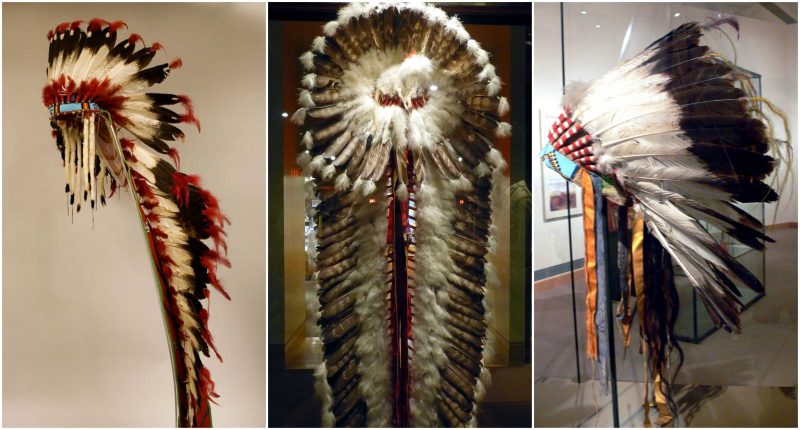Feathered war bonnets are worn by men of the American Plains Indians who have earned a place of great respect in their tribe. Originally they were sometimes worn into battle, but they are now primarily used for ceremonial occasions.
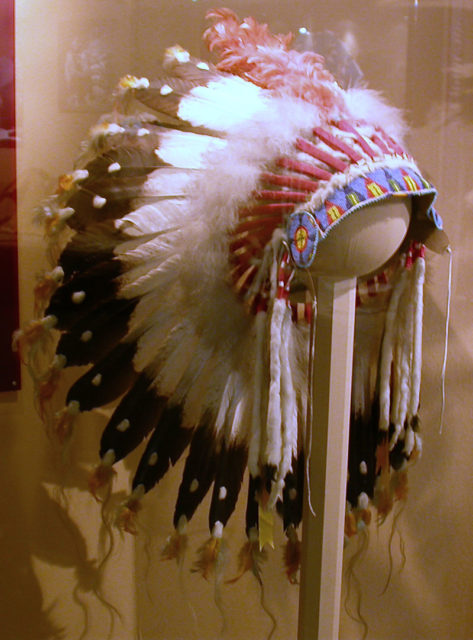
Native American tribes consider the presentation of an eagle feather to be one of their highest marks of respect. Any honored person must have earned their feather through selfless acts of courage and honour, or been gifted them in gratitude for their work or service to their tribe.
Traditional deeds that brought honour would include acts of valor in battle, but also political and diplomatic gains or acts that helped their community survive and prosper. The esteem attached to eagle feathers was so high that in many cases, such as a warrior (e.g. Dog Soldiers of the Cheyenne), only two or three honour feathers might be awarded in their whole lifetime. Historically, the warrior who was the first to touch an enemy in battle and escape unscathed received an eagle feather.
When enough feathers were collected, they might be incorporated into a headdress or some other form of worn regalia. Headdresses were usually reserved exclusively for the tribe’s chosen political and spiritual leaders.
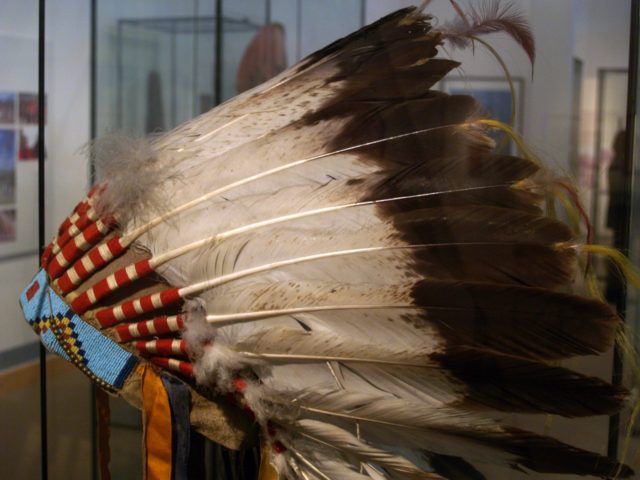
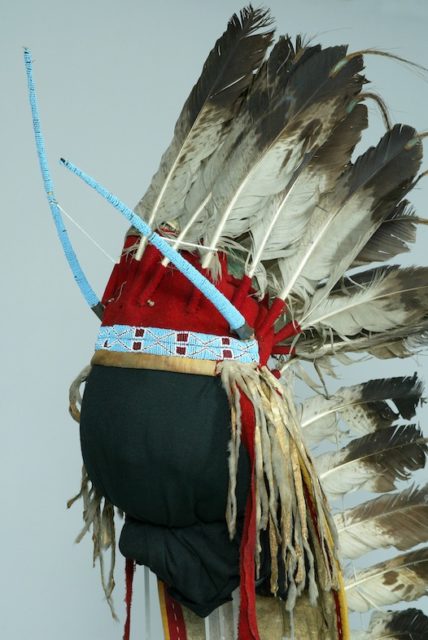
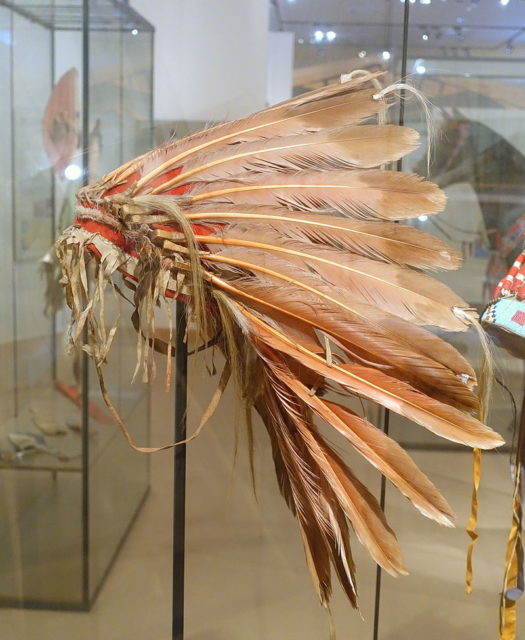
Plains Indians normally use eagle feathers as the most significant part of the bonnet to represent honor and respect. Some Plains-style bonnet forms are the “horned” bonnet, “flaring” eagle feather bonnet, and the “fluttering feather” bonnet.
The “horned” bonnet can consist of a buckskin skull cap, shaved bison or cow horns, and dyed horsehair with bunches of owl feathers beneath the skull cap. The “flaring” eagle feather bonnet is often made of golden eagle tail feathers connected to a buckskin or felt crown. There are slits at the base of the crown that allow the bonnet to have a “flaring” look.
An unusual form of bonnet that is no longer used would be the “fluttering feather” bonnet. This can have golden eagle, hawk, and owl feathers loosely attached to a felt or buckskin cap to make it hang at the sides.
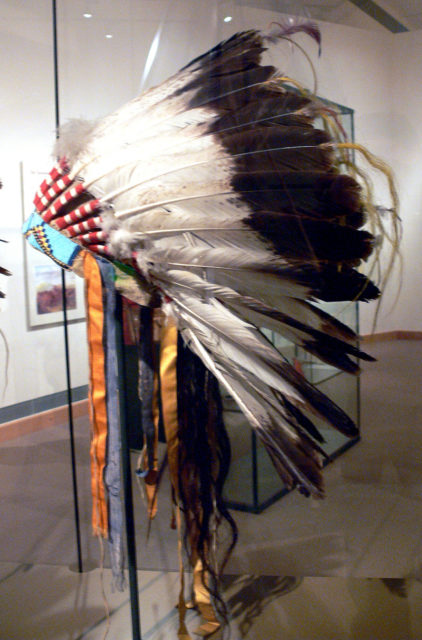
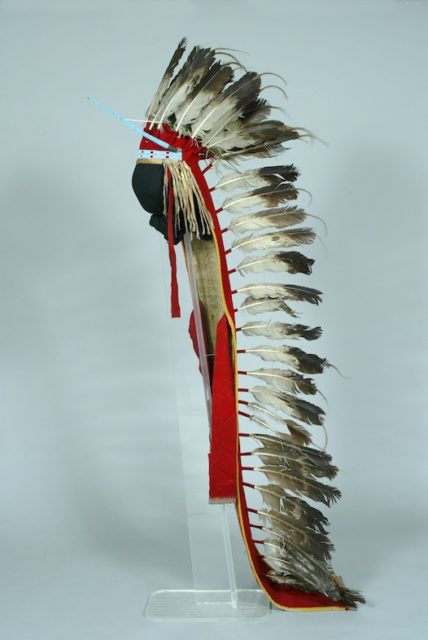
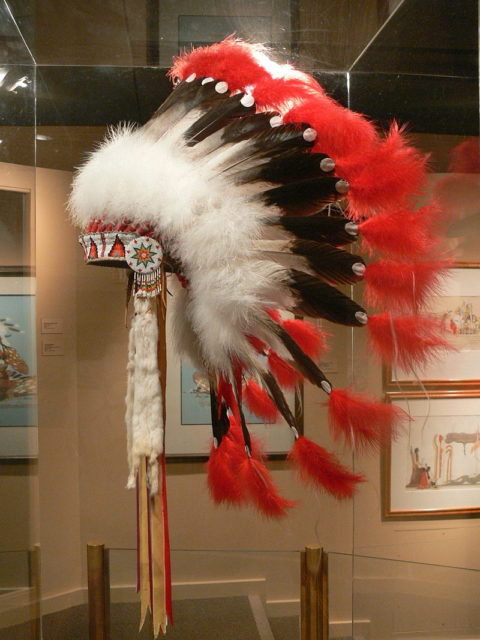
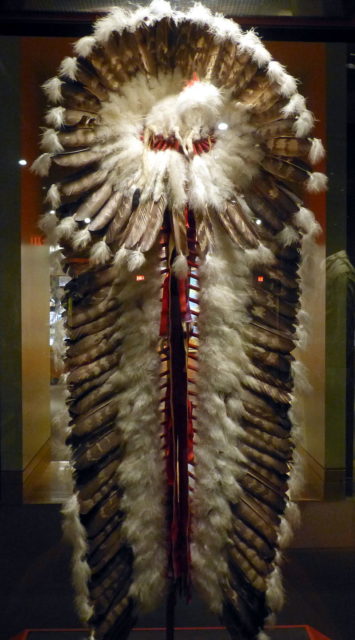
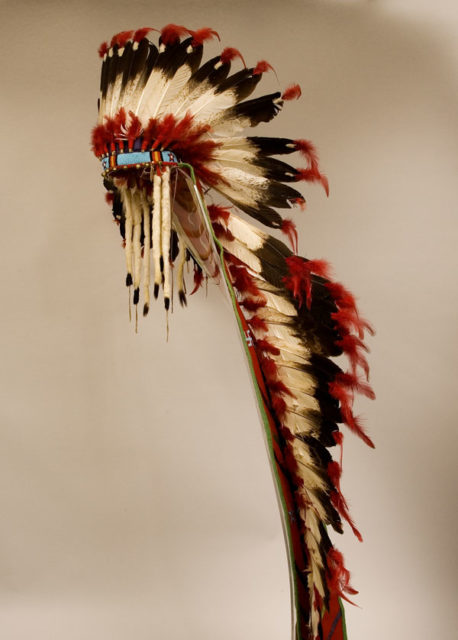
Roman Nose, who was one of the most influential Cheyenne warriors of the Plain Indian Wars of the 1860s, was known for his illustrious warbonnet that was said to protect him during battle. Several instances record how while wearing his war bonnet, he rode back and forth before soldiers of the United States Army and, despite being fired upon, was left unscathed.
Due to their historical importance and status, many Native Americans now consider the wearing of headdresses without the express permission of tribal leaders to be an affront to their culture and traditions.
